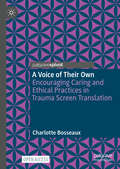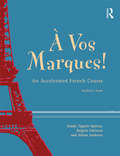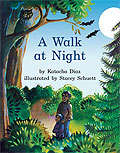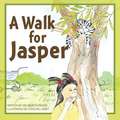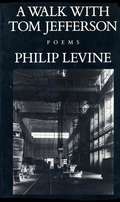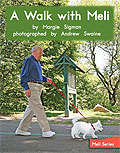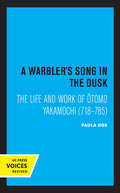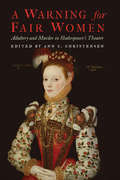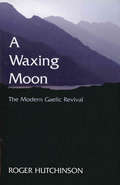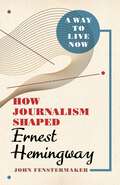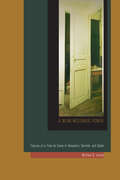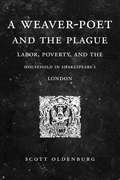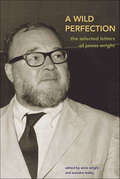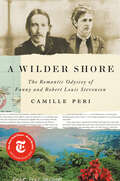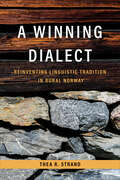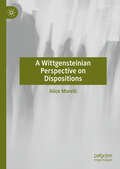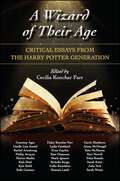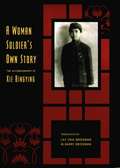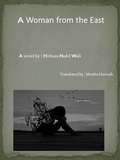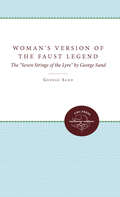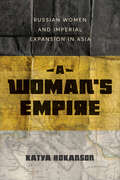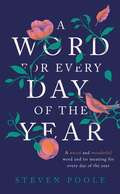- Table View
- List View
A Voice of Their Own: Encouraging Caring and Ethical Practices in Trauma Screen Translation
by Charlotte BosseauxThis open access book explores which audiovisual translation methods or techniques are the most ethical when translating personal narratives dealing with trauma and emotions, and provides good practice guidelines for different stakeholders (audiovisual translators, Language Service Providers, charities, survivors and filmmakers) to ensure that the voices of those who have suffered from trauma and Gender-Based Violence are ethically conveyed on-screen. It also shows how subtitlers cope with the translation of challenging sensitive material. The work described in this book is based on Prof Bosseaux&’s Ethical Translation project and is underpinned by a practical component: a multilingual documentary featuring women who have gone through traumatic events and whose first language is not English. Above all, the research emphasises the importance of filming and translating ethically with a focus on making sure survivors and audiovisual translators&’ voices are fully heard through respectful translation. This book showcases the theories and methods used and developed throughout the Ethical Translation project and the results of the research conducted, ultimately demonstrating the importance of carrying out practice-based research and encouraging collaboration between academics, practitioners and stakeholders to produce research that can be of use to, and be applied by, these groups.
A Vos Marques!: An Accelerated French Course: Student's Book
by Alison Andrews Brigette Edelston Sandy Tippett-SpirtouA Vos Marques! is an introductory course for students taking French as an option alongside their main degree course. It has been developed specifically for false beginners: students who have a slight acquaintance with the language.The course comprises a student's book, teacher's book and 180 minutes of audio (available for free download at http://www.routledge.com/books/details/9780415157285/ ) and, through fifteen chapters, follows the progress of an English-speaking student studying in Paris, whose achievements are designed to reflect those of the course user.Special features include:* activities involving pair and group work* an aid to self-assessment at the end of each chapter* hints on vocabulary learning* clear and accessible layout including integrated cartoons.The guidance offered by the teachers book is of particular importance, as lower-level classes in universities are often taught by native-speaking lecturers with little or no teaching training or experience.
A Walk at Night (Fountas & Pinnell LLI Green #Level G, Lesson 100)
by Katacha DiazFountas and Pinnell Leveled Literacy Intervention Green System -- 1st Grade
A Walk for Jasper
by Michele Dufresne Sterling LametKatie has a plan for taking Jasper the Cat for a walk. Find out how Jasper feels about the plan.
A Walk with Meli (Fountas & Pinnell LLI Green #Level E, Lesson 59)
by Margie SigmanFountas and Pinnell Leveled Literacy Intervention Green System -- 1st Grade
A War Between Us (Great Minds Wit & Wisdom #Grade 5, Module 3)
by Great MindsNIMAC-sourced textbook
A War Between Us: Assessment Pack (Great Minds Wit & Wisdom #Grade 5, Module 3)
by Great MindsNIMAC-sourced textbook
A Warbler's Song in the Dusk: The Life and Work of Otomo Yakamochi (718-785)
by Paula DoeThis title is part of UC Press's Voices Revived program, which commemorates University of California Press’s mission to seek out and cultivate the brightest minds and give them voice, reach, and impact. Drawing on a backlist dating to 1893, Voices Revived makes high-quality, peer-reviewed scholarship accessible once again using print-on-demand technology. This title was originally published in 1982.
A Warning for Fair Women: Adultery and Murder in Shakespeare's Theater (Early Modern Cultural Studies)
by Ann C. ChristensenA Warning for Fair Women is a 1599 true-crime drama from the repertory of Shakespeare&’s acting company. While important to literary scholars and theater historians, it is also readable, relevant, and stage-worthy today. Dramatizing the murder of London merchant George Saunders by his wife&’s lover, and the trials and executions of the murderer and accomplices, it also sheds light on neighborhood and domestic life and crime and punishment. This edition of A Warning for Fair Women is fully updated, featuring a lively and extensive introduction and covering topics from authorship and staging to the 2018 world revival of the play in the United States. It includes a section with discussion and research questions along with resources on topics raised by the play, from beauty and women&’s friendship to the occult. Ann C. Christensen presents a freshly edited text for today&’s readers, with in-depth explanatory notes, scene summaries, a gallery of period images, and full scholarly apparatus.
A Waxing Moon: The Modern Gaelic Revival
by Roger HutchinsonThirty years ago, the Gaelic language and culture which had been eminent in Scotland for 1,300 years seemed to be in the final stages of a 200-year terminal decline. The number of Gaelic speakers in Scotland had fallen tenfold over the previous century. The language itself was commonplace only in the scattered communities of the north-west Highlands and Hebrides.By the early years of the 21st century, however, a sea-change had taken place. Gaelic - for so long a subject of mockery and hostility - had become what some termed 'fashionable'. Gaelic-speaking jobs were available; Gaelic-medium education was established in many areas; and politicians and business-people saw benefits in acting as friends of the culture. While the numbers of Gaelic-speakers continued to fall as older people passed away, the decline was slowed and for the first time in 100 years the percentage of young people using the language began to rise proportionately. What had happened was a kind of renaissance: a Gaelic revival that manifested itself in popular music, literature, art, poetry, publishing, drama, radio and television. It was a phenomenon as obvious as it was unexpected. And at the heart of that movement lay education. A Gaelic Modern History will tell the story of one institution, Sabhal Mor Ostaig, the Gaelic College in Skye that has stood at the centre of this revival. But, chiefly, the book will examine how a venerable culture was given hope for the future at the point when all seemed lost. It recounts the scores of personalities, from Sorley Maclean and Runrig to Michael Forsyth and Gordon Brown, who have become involved in that process.
A Way to Live Now: How Journalism Shaped Ernest Hemingway
by John FenstermakerA Way to Live Now juxtaposes the dual roles of fiction writer and journalist throughout the career of Ernest Hemingway. Focusing on the author’s appearances in Esquire over forty years, John Fenstermaker traces the evolving nature of Hemingway’s presence in its pages: first as the author of twenty-five essays (1933–1936) and six short stories (1936–1939), then as a popular subject for interactions among editors, subscribers, and critics (1933–1961), a process that continued posthumously with reprintings, miscellanea, and reader commentaries (1961–1973). Developing a friendship and correspondence with founding editor Arnold Gingrich, Hemingway contributed to twenty-eight of the magazine’s first thirty-three issues, including classic pieces such as “On the Blue Water” and “The Snows of Kilimanjaro.” Through Esquire, Fenstermaker finds a portal for tracing a documentary record of Hemingway as both writer and public figure.Filled with incisive commentaries on his roles as reporter, essayist, and fiction writer, A Way to Live Now: How Journalism Shaped Ernest Hemingway offers new perspectives on the eventful life and work of one of the twentieth century’s most influential authors and complicated personalities.
A Weak Messianic Power: Figures of a Time to Come in Benjamin, Derrida, and Celan
by Michael G. LevineIn his famous theses on the philosophy of history, Benjamin writes: “We have been endowed with a weak messianic power to which the past has a claim.” This claim addresses us not just from the past but from what will have belonged to it only as a missed possibility and unrealized potential. For Benajmin, as for Celan and Derrida, what has never been actualized remains with us, not as a lingering echo but as a secretly insistent appeal. Because such appeals do not pass through normal channels of communication, they require a special attunement, perhaps even a mode of unconscious receptivity. Levine examines the ways in which this attunement is cultivated in Benjamin’s philosophical, autobiographical, and photohistorical writings; Celan’s poetry and poetological addresses; and Derrida’s writings on Celan.
A Weaver-Poet and the Plague: Labor, Poverty, and the Household in Shakespeare’s London (Cultural Inquiries in English Literature, 1400–1700 #3)
by Scott OldenburgWilliam Muggins, an impoverished but highly literate weaver-poet, lived and wrote in London at the turn of the seventeenth century, when few of his contemporaries could even read. A Weaver-Poet and the Plague’s microhistorical approach uses Muggins’s life and writing, in which he articulates a radical vision of a commonwealth founded on labor and mutual aid, as a gateway into a broader narrative about London’s "middling sort" during the plague of 1603.In debt, in prison, and at odds with his livery company, Muggins was forced to move his family from the central London neighborhood called the Poultry to the far poorer and more densely populated parish of St. Olave’s in Southwark. It was here, confined to his home as that parish was devastated by the plague, that Muggins wrote his minor epic, London’s Mourning Garment, in 1603. The poem laments the loss of life and the suffering brought on by the plague but also reflects on the social and economic woes of the city, from the pains of motherhood and childrearing to anxieties about poverty, insurmountable debt, and a system that had failed London’s most vulnerable. Part literary criticism, part microhistory, this book reconstructs Muggins’s household, his reading, his professional and social networks, and his proximity to a culture of radical religion in Southwark.Featuring an appendix with a complete version of London’s Mourning Garment, this volume presents a street-level view of seventeenth-century London that gives agency and voice to a class that is often portrayed as passive and voiceless.
A Weaver-Poet and the Plague: Labor, Poverty, and the Household in Shakespeare’s London (Cultural Inquiries in English Literature, 1400–1700)
by Scott OldenburgWilliam Muggins, an impoverished but highly literate weaver-poet, lived and wrote in London at the turn of the seventeenth century, when few of his contemporaries could even read. A Weaver-Poet and the Plague’s microhistorical approach uses Muggins’s life and writing, in which he articulates a radical vision of a commonwealth founded on labor and mutual aid, as a gateway into a broader narrative about London’s “middling sort” during the plague of 1603.In debt, in prison, and at odds with his livery company, Muggins was forced to move his family from the central London neighborhood called the Poultry to the far poorer and more densely populated parish of St. Olave’s in Southwark. It was here, confined to his home as that parish was devastated by the plague, that Muggins wrote his minor epic, London’s Mourning Garment, in 1603. The poem laments the loss of life and the suffering brought on by the plague but also reflects on the social and economic woes of the city, from the pains of motherhood and childrearing to anxieties about poverty, insurmountable debt, and a system that had failed London’s most vulnerable. Part literary criticism, part microhistory, this book reconstructs Muggins’s household, his reading, his professional and social networks, and his proximity to a culture of radical religion in Southwark.Featuring an appendix with a complete version of London’s Mourning Garment, this volume presents a street-level view of seventeenth-century London that gives agency and voice to a class that is often portrayed as passive and voiceless.
A Wild Perfection: The Selected Letters of James Wright
by James WrightThe life and work of a major American poet described in his own words."There is something about the very form and occasion of a letter--the possibility it offers, the chance to be as open and tentative and uncertain as one likes and also the chance to formulate certain ideas, very precisely--if one is lucky in one's thoughts," wrote James Wright, one of the great lyric poets of the last century, in a letter to a friend. A Wild Perfection is a compelling collection that captures the exhilarating and moving correspondence between Wright and his many friends. In letters to fellow poets Donald Hall, Theodore Roethke, Galway Kinnell, James Dickey, Mary Oliver, and Robert Bly, Wright explored subjects from his creative process to his struggles with depression and illness.A bright thread of wit, gallantry, and passion for describing his travels and his beloved natural world runs through these letters, which begin in 1946 in Martin's Ferry, Ohio, the hometown he would memorialize in verse, and end in New York City, where he lived for the last fourteen years of his life. Selected Letters is no less than an epistolary chronicle of a significant part of the midcentury American poetry renaissance, as well as the clearest biographical picture now available of a major American poet.
A Wilder Shore: The Romantic Odyssey of Fanny and Robert Louis Stevenson
by Camille Peri&“Engrossing . . . [A] richly researched and vivid double portrait.&” —Phyllis Rose, The Atlantic&“A love story, an adventure story, two literary biographies in one; A Wilder Shore is these things and more—and it's very, very good.&” —Roddy Doyle, Booker Prize-winning author of Paddy Clarke Ha Ha Ha and The Women Behind the DoorThe extraordinary story of the creative and romantic partnership between Robert Louis Stevenson and his wife and muse, Fanny Van de GriftHe was an ambitious but drifting writer from a prominent Scottish family. She was a tough Nevada silver miner&’s wife, with children, when they met. Who could have predicted that Fanny Van de Grift and Robert Louis Stevenson would go on to create one of history&’s great literary marriages?From their first encounter in France in 1876, Fanny and Louis&’s partnership transcended societal expectations to become a literary union that was progressive, eccentric, and tempestuous, but always animated by a profound mutual respect. Seeking creative freedom, inspiration, and better health for Louis, who battled chronic illness, they embarked on a whirlwind journey around the world, from the bohemian enclaves of Europe to the shores of Samoa, where they lived and joined the native islanders&’ fight for independence from imperialist powers. Amid the currents of their stormy yet deeply loving relationship, Fanny wrote colorful accounts of her life, contributed to Louis&’s work and kept him alive to pen classic novels such as Treasure Island, Kidnapped, and The Strange Case of Dr Jekyll and Mr Hyde that would go on to resonate with generations of readers.A portrait of two extraordinary people and a testament to the power of love to foster the human spirit, A Wilder Shore unfolds with all the richness and complexity of a timeless epic, capturing the resilience, courage, and devotion that sparked some of our most celebrated and enduring literary masterpieces.
A Winning Dialect: Reinventing Linguistic Tradition in Rural Norway (Teaching Culture: UTP Ethnographies for the Classroom)
by Thea R. StrandWhy did a rural dialect from the heart of Norwegian farm country win a national dialect popularity contest? What were the effects of this win, and what has happened to the winning dialect since? A Winning Dialect tells a story of linguistic and cultural transformation in the rural district of Valdres, Norway. It shows how lifelong residents have adapted to changing social, economic, and political circumstances – particularly the shift from family farming to tourism development – and how they have used local linguistic and cultural resources to craft a viable future for themselves and the places their ancestors have called home for centuries. Once stigmatized as poor and uneducated, the distinctive dialect of Valdres now holds a special place as a valuable part of Norwegian national heritage, as well as a marker of local belonging. Based on two decades of research and fieldwork, A Winning Dialect considers how a traditional dialect is transformed – linguistically and culturally – as it is put to new uses in the contemporary world.
A Wittgensteinian Perspective on Dispositions
by Alice MorelliThis book investigates dispositions in grammatical-normative terms through a contrast between a naturalized paradigm and a Wittgenstein-inspired perspective. The book presents a conceptual analysis of the notion of disposition informed by Wittgenstein's and Ryle's philosophies to defend a normative notion of disposition. The book opens with a presentation of the current naturalized paradigm on dispositions, focusing on its main presuppositions and limits. It then turns to the discussion of a Wittgensteinian-inspired dispositionalism of knowing and understanding, before filling the exegetical gap about Wittgenstein's own use of the notion of disposition. The author critically engages with the current paradigm using Ryle's notion of category mistake, before concluding with a presentation of some philosophical views where a notion of normative disposition is employed. This book is essential reading for anyone searching for a new perspective on dispositions and will broaden the appeal of the Wittgensteinian tradition within contemporary analytic philosophy and, potentially, psychology as well.
A Wizard of Their Age: Critical Essays from the Harry Potter Generation
by Cecilia Konchar FarrA Wizard of Their Age began when the students in Cecilia Konchar Farr's "Six Degrees of Harry Potter" course at St. Catherine University kept finding errors in the available scholarship. These students had been reading Harry Potter for their entire literate lives, and they demanded more attention to the details they found significant. "We can do better than this," they said.Konchar Farr, two undergraduate teaching assistants, and five student editors decided to test that hypothesis. After issuing a call for contributions, they selected fifteen thoughtful academic essays by students from across the country. These essays examine the Harry Potter books from a variety of perspectives, including literary, historical, cultural, gender, mythological, psychological, theological, and genetic—there is even a nursing care plan for Tom Riddle. Interspersed among the essays are brief vignettes entitled "My Harry Potter Story," where students write about their personal encounters with the novels.Although a quick Internet search yields a dazzling number of books about Harry Potter, few are as deeply invested or insightful as A Wizard of Their Age. Written and edited by—and for—members of the Harry Potter generation, these essays demonstrate this generation's passionate engagement with the Harry Potter phenomenon and provide numerous critical insights into the individual novels and the series as a whole.
A Woman Soldier's Own Story
by Barry Brissman Bingying XieFor the first time, a complete version of the autobiography of Xie Bingying (1906-2000) provides a fascinating portrayal of a woman fighting to free herself from the constraints of ancient Chinese tradition amid the dramatic changes that shook China during the 1920s, '30s, and '40s.Xie's attempts to become educated, her struggles to escape from an arranged marriage, and her success in tricking her way into military school reveal her persevering and unconventional character and hint at the prominence she was later to attain as an important figure in China's political culture. Though she was tortured and imprisoned, she remained committed to her convictions. Her personal struggle to define herself within the larger context of political change in China early in the last century is a poignant testament of determination and a striking story of one woman's journey from Old China into the new world.
A Woman from the East: The life story of an eastern woman
by Haitham WaliIt is a true story free from symbolism does not need imagination, looking at the the eastern reality that created it is enough!
A Woman's Version of the Faust Legend: The Seven Strings of the Lyre
by George SandGeorge Sand's The Seven Strings of the Lyre is a philosophical play written in poetic prose and never intended for perfomance on stage. Completed in 1838 during the early stages of Sand's romantic involvement with Frederic Chopin, it is one of the very few treatments of the Faust legend by a woman. George Kennedy offers the first English translation of this work, along with an introduction that places the play in its philosophical and literary context.The Seven Strings of the Lyre is Sand's response to Goethe's Faust and a reflection of her views of music as developed in conversations with Chopin and Franz Liszt. Sand, unlike so many of her contemporaries, saw Goethe as a less-than-ideal poet. She criticized him for lacking "enthusiasm, belief, and passion," and she faulted him for being a proponent of the art-for-art's-sake movement, which Sand deplored for its lack of social conscience.Sand's play describes the efforts of Mephistopheles to win the soul of Albertus, a teacher of philosophy and descendant of Faust. Regarding Goethe's Mephistopheles as insufficiently wicked, Sand conjures up a devil truly worthy of the epithet. For Faust, whom she considered too cold, Sand substitues the more emotional Albertus, whose despair that life and love have passed him by in his devotion to philosophy makes him vulnerable to the machinations of the devil. And in place of Goethe's village girl, Marguerite, or the dangerous Helen of the earlier Faust legend, Sand creates the angelic Helen, who awakens Albertus's love and teaches him the emotional and spiritual truths he had never learned from books.Richly philosophical and deeply romantic, the play is a reaction against eighteenth-century rationalism. It asserts the existence of some higher truth to be foud in music, poetry, and a sympathetic response to nature, but it also, contrary to the doctrine of art for art's sake, demands social responsibility from the artist. Sand believed that the arts should lead society to an awareness of truth, freedom, and the meaning of life, and The Seven Strings of the Lyre is an attempt to dramatize this belief.Originally published in 1989.A UNC Press Enduring Edition -- UNC Press Enduring Editions use the latest in digital technology to make available again books from our distinguished backlist that were previously out of print. These editions are published unaltered from the original, and are presented in affordable paperback formats, bringing readers both historical and cultural value.
A Woman’s Empire: Russian Women and Imperial Expansion in Asia
by Katya HokansonA Woman’s Empire explores a new dimension of Russian imperialism: women actively engaged in the process of late imperial expansion. The book investigates how women writers, travellers, and scientists who journeyed to and beyond Central Asia participated in Russia’s "civilizing" and colonizing mission, utilizing newly found educational opportunities while navigating powerful discourses of femininity as well as male-dominated science. Katya Hokanson shows how these Russian women resisted domestic roles in a variety of ways. The women writers include a governor general’s wife, a fiction writer who lived in Turkestan, and a famous Theosophist, among others. They make clear the perspectives of the ruling class and outline the special role of women as describers and recorders of information about local women, and as builders of "civilized" colonial Russian society with its attendant performances and social events. Although the bulk of the women’s writings, drawings, and photography is primarily noteworthy for its cultural and historical value, A Woman’s Empire demonstrates how the works also add dimension and detail to the story of Russian imperial expansion and illuminates how women encountered, imagined, and depicted Russia’s imperial Other during this period.
A Word for Every Day of the Year
by Steven PooleA weird and wonderful word and its meaning for every day of the year.Who knew that to dringle is to 'waste time in a lazy lingering manner'? Or that a sudden happy ending could be termed a eucotastrophe? Looking for an alternative word to 'bullshit'? Then try taradiddle.A Word for Every Day of the Year is a fascinating collection of 366 words and their definitions, perfect for anyone who loves the richness of the English language, its diversity and wants to expand their vocabulary. Each day offers a rare and remarkable word with its history and definition and occasionally a challenge to include it in our lives.
